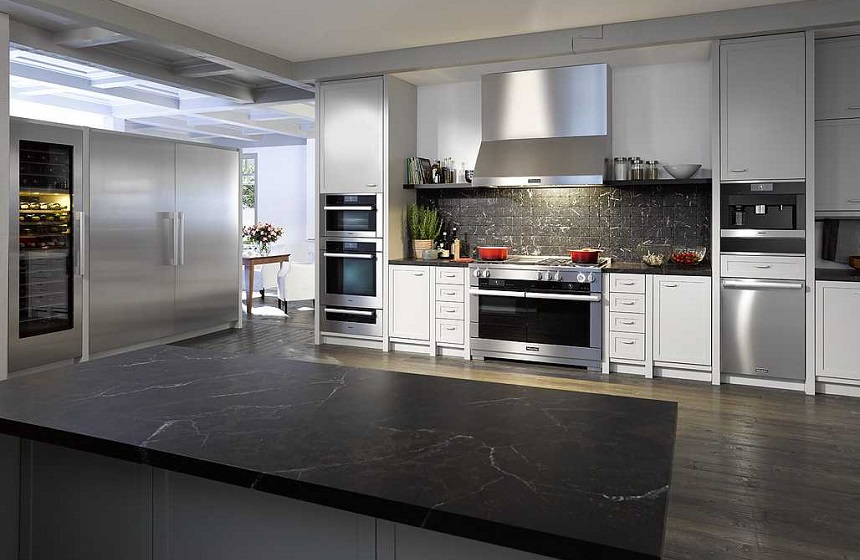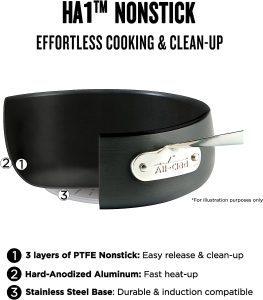Contents
- Before and After: A Guide to Upgrading Your Appliances
- 1. Determining the Need for Upgrading
- 2. Researching New Appliance Options
- 3. Setting a Budget
- 4. Choosing the Right Appliances
- 5. Preparing for the Upgrade Process
- 6. Safely Disposing of Old Appliances
- 7. Ensuring a Smooth Transition
- 8. Maximizing the Benefits of Upgraded Appliances
- 9. Troubleshooting Common Issues
- 10. Additional Considerations and Tips
Imagine a world where doing laundry feels like a breeze, cooking becomes an enjoyable task, and your home is filled with state-of-the-art appliances that enhance your daily life. Well, with the help of “Before and After: A Guide to Upgrading Your Appliances,” this dream can become a reality. This comprehensive guide takes you on a journey, showcasing the transformative power of upgrading your appliances. From choosing the right models to understanding the installation process, “Before and After” equips you with the knowledge and confidence to make informed decisions about your appliances, ensuring a seamless transition to a more efficient and stylish home.
Before and After: A Guide to Upgrading Your Appliances
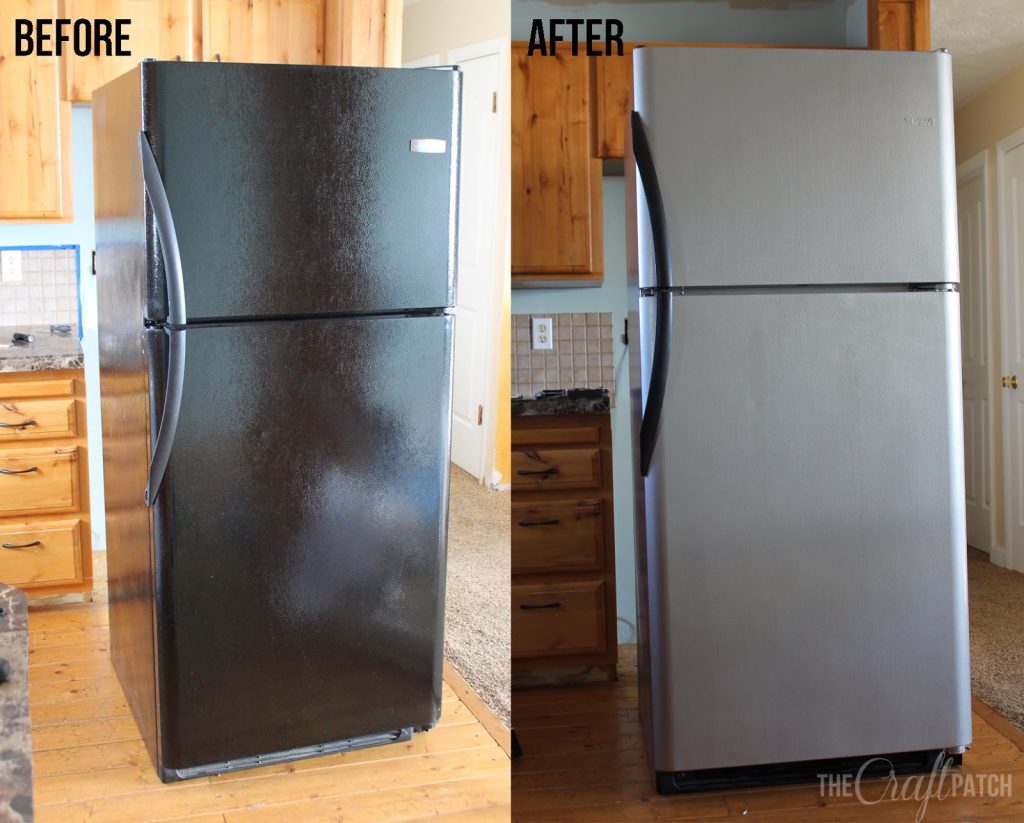
1. Determining the Need for Upgrading
Assessing the current condition of your appliances
Before deciding to upgrade your appliances, it’s important to assess their current condition. Take a close look at each appliance and check for any signs of wear and tear, such as rust, cracks, or strange noises. If your appliances are constantly breaking down or not performing optimally, it may be a sign that they need to be replaced.
Evaluating the performance and functionality of your appliances
Consider how well your appliances are performing their intended functions. Are your washing machine’s cycles becoming longer and less efficient? Is your refrigerator struggling to maintain the desired temperature? Evaluating the performance and functionality of your appliances will help you determine if they are still effective in meeting your daily needs.
Considering energy efficiency and cost savings
Upgrading to energy-efficient appliances can lead to significant cost savings in the long run. Take into account the energy consumption of your current appliances and compare it to newer models with higher energy-efficiency ratings. This will not only reduce your monthly utility bills but also contribute to a greener and more sustainable environment.
Identifying the potential benefits of upgrading
Upgrading your appliances can offer numerous benefits. Newer models often come with advanced features and technologies that enhance functionality and convenience. Improved performance and energy efficiency can help save time, money, and reduce your carbon footprint. Furthermore, upgrading your appliances can enhance the overall aesthetics of your home, giving it a fresh and modern look.
2. Researching New Appliance Options
Exploring the latest appliance trends and technologies
Before making a decision, it’s important to stay informed about the latest appliance trends and technologies. Research online or visit appliance stores to stay up to date with the newest innovations. This will help you identify the features and functionalities that align with your needs and preferences.
Considering different appliance types and models
There are various appliance types and models to choose from, each catering to different needs and lifestyles. Whether you’re looking for a sleek and stylish refrigerator or a high-capacity washing machine, consider your requirements and the demands of your household. Compare different options and prioritize the features that are most important to you.
Reading customer reviews and ratings
To gain insights into the performance and reliability of different appliance models, it’s beneficial to read customer reviews and ratings. These firsthand experiences from other consumers can provide valuable information about the pros and cons of specific appliances. Look for patterns or common issues mentioned in the reviews to make an informed decision.
Comparing prices and features
When researching new appliances, it’s essential to compare prices and features across different brands and models. Consider your budget, the longevity of the appliances, and the value you can receive from each option. Make a list of the features that are must-haves and determine which models offer them at the most reasonable price.
3. Setting a Budget
Determining your affordability range
Before setting out to purchase new appliances, it’s important to determine your affordability range. Consider your current financial situation and how much you are willing to spend on the upgrades. Setting a budget will help guide your decision-making process and prevent you from overspending.
Considering long-term cost savings
When determining your budget, it’s crucial to consider the long-term cost savings that come with upgrading to energy-efficient appliances. While they may have a higher upfront cost, these appliances typically consume less energy, resulting in reduced utility bills over time. Calculate estimated savings based on energy consumption and factor that into your budget decision.
Exploring financing options
If the upfront cost of upgrading your appliances surpasses your current budget, explore financing options that can help make the purchase more manageable. Many appliance retailers offer financing plans with flexible payment terms, allowing you to spread out the cost over a specific period. Be sure to compare interest rates and terms before committing to any financing option.
Understanding the value of different price ranges
It’s essential to understand the value associated with different price ranges when setting a budget for upgrading your appliances. While it may be tempting to opt for the cheapest option available, it’s important to consider the quality, reliability, and longevity of the appliances. Choose appliances that offer the best value for your budget, ensuring they meet your needs and will last for years to come.
4. Choosing the Right Appliances
Matching appliance features with your needs
Choosing the right appliances involves matching their features with your specific needs. Consider the functionalities that are important to you and your household’s routine. Do you need a dishwasher with multiple wash cycles, or a stove with precise temperature control? Identify the features that will make your life more convenient and select appliances accordingly.
Considering the size and capacity of appliances
Size and capacity are crucial factors to consider when choosing appliances. Measure the available space in your kitchen or laundry area to determine the appropriate dimensions of the appliances. Additionally, consider the capacity of appliances like refrigerators or washers to ensure they can accommodate the needs of your household.
Selecting energy-efficient models
Opting for energy-efficient models is not only environmentally friendly but also beneficial for your wallet. Look for appliances with Energy Star labels, as these have been certified to meet strict energy-efficiency standards. High-efficiency appliances use less water and electricity, resulting in lower utility bills and reduced environmental impact.
Checking for warranty and after-sales service
When purchasing new appliances, it’s important to check for warranty coverage and the availability of reliable after-sales service. A warranty provides peace of mind in case of any unforeseen issues or malfunctions. Additionally, ensure that the manufacturer or retailer provides adequate customer support and repair services should you encounter any problems.

5. Preparing for the Upgrade Process
Measuring the space requirements
Once you’ve chosen the right appliances, it’s time to prepare your home for the upgrade process. Measure the space requirements of the new appliances and compare them against the available space in your kitchen or laundry area. This will help ensure a proper fit and prevent any installation issues.
Arranging for appliance delivery and installation
Coordinate the delivery and installation of your new appliances with the retailer or manufacturer. Make sure to provide accurate information regarding the delivery address, date, and any specific instructions for installation. It’s also important to confirm whether the delivery team will remove any packaging or dispose of the old appliances.
Clearing out the old appliances
Before the new appliances arrive, clear out the old ones from their current location. Empty the contents of refrigerators and freezers, defrost if necessary, and unplug all appliances from the power source. Properly dispose of any food items and clean the interior to prevent unpleasant odors or potential contamination.
Ensuring proper electrical and plumbing connections
Check the electrical and plumbing connections in the area where the new appliances will be installed. Ensure that the outlets and plumbing fixtures are in good condition and compatible with the requirements of the new appliances. If needed, consult a professional electrician or plumber to make any necessary adjustments or installations.
6. Safely Disposing of Old Appliances
Knowing environmental regulations and options
Properly disposing of your old appliances is not only important for safety but also for environmental reasons. Research the environmental regulations in your area regarding the disposal of appliances and ensure compliance. Improper disposal can harm the environment and pose a risk to human health.
Donating or selling functional appliances
If your old appliances are still functional, consider donating or selling them instead of discarding them. Many charitable organizations accept appliances in good working condition and can provide them to individuals or families in need. Selling functional appliances through online marketplaces can also be a viable option to recoup some of the cost of your upgrade.
Recycling non-functioning or outdated appliances
For non-functioning or outdated appliances, recycling is the best choice. Many recycling centers or scrap metal businesses accept appliances for proper disposal. They will safely extract valuable materials and dispose of any hazardous components in an environmentally responsible manner. Contact local recycling facilities to learn more about their appliance recycling programs.
Hiring professional disposal services if necessary
If you’re unsure about the proper disposal methods or if you have large appliances that are difficult to handle, consider hiring professional disposal services. These services specialize in safely removing and disposing of appliances, ensuring compliance with environmental regulations. While there may be a fee involved, it offers convenience and peace of mind.
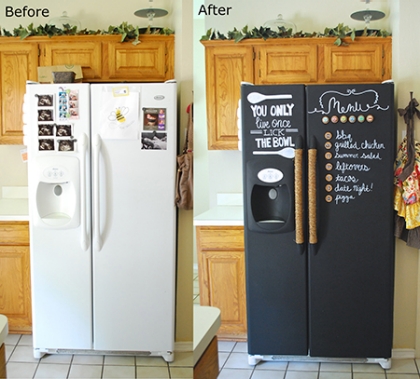
7. Ensuring a Smooth Transition
Testing new appliances thoroughly
Once the new appliances are installed, thoroughly test each one to ensure they are functioning properly. Run a full cycle for washing machines, test different temperature settings on your stove, and confirm that refrigerators are maintaining the desired temperature. Report any issues immediately to the retailer or manufacturer to seek assistance or necessary repairs.
Understanding the user manuals and operating instructions
To make the most of your upgraded appliances, take the time to read the user manuals and operating instructions that come with them. Familiarize yourself with the various features, settings, and maintenance requirements. This will help you optimize the performance of your appliances and prevent any misuse or damage.
Adjusting to new features and settings
Upgraded appliances often come with new features and settings that may require some adjustment. Take the time to explore these features and experiment with different settings to find what works best for you. Don’t hesitate to refer back to the user manuals if you have any questions or need clarification on how to utilize specific features.
Monitoring performance and addressing any issues
After the initial transition period, continue to monitor the performance of your upgraded appliances on an ongoing basis. Keep an eye out for any issues or irregularities, such as strange noises or unexpected malfunctions. Address any issues promptly by either referring to the user manuals, troubleshooting guides, or contacting customer support for assistance.
8. Maximizing the Benefits of Upgraded Appliances
Utilizing advanced features and technologies
To fully maximize the benefits of your upgraded appliances, make sure to utilize the advanced features and technologies they offer. Whether it’s programmable settings, smart home integration, or energy-saving modes, take advantage of these features to enhance functionality, convenience, and efficiency in your daily life.
Implementing energy-saving practices
While energy-efficient appliances contribute to cost savings, it’s important to complement them with energy-saving practices. Adjust settings to minimize energy consumption, such as using shorter wash cycles or lower temperature settings. Additionally, develop habits like turning off appliances when not in use and optimizing their use during off-peak energy hours.
Maintaining regular cleaning and maintenance schedules
Regular cleaning and maintenance are vital to ensure the longevity and optimal performance of your upgraded appliances. Follow the manufacturer’s recommendations for cleaning, and schedule routine maintenance tasks like changing filters or cleaning coils. This will prevent the buildup of dirt and debris and help avoid potential issues in the long run.
Tracking and comparing energy consumption
Track and compare your energy consumption before and after upgrading your appliances to assess the impact of the change. Monitor your utility bills and compare usage patterns to identify any significant differences. This will provide valuable insights into the cost savings and environmental benefits you’re achieving with your new energy-efficient appliances.
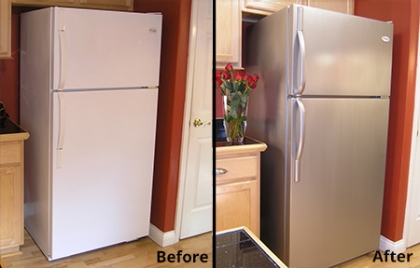
9. Troubleshooting Common Issues
Identifying potential problems and solutions
While upgraded appliances are generally reliable, occasional issues may arise. Learn to identify potential problems with your appliances and troubleshoot them when possible. Refer to the user manuals or online resources for common troubleshooting steps. Identifying and addressing minor issues promptly can prevent them from escalating into major problems.
Handling minor repairs and maintenance
For minor repairs and maintenance tasks, consider handling them yourself if you feel confident and have the necessary tools. Many manufacturers provide troubleshooting guides or online resources to help customers address common issues. However, exercise caution and know your limits – if you’re unsure or uncomfortable, it’s best to seek professional assistance.
Seeking professional assistance when needed
In the event of more complex issues or major malfunctions, it’s advisable to seek professional assistance. Attempting complicated repairs without proper knowledge and experience can potentially worsen the situation or void any warranty coverage. Reach out to authorized service centers or professional technicians who specialize in the specific appliance brand or model.
Understanding warranty coverage and claims
Understanding the warranty coverage of your upgraded appliances is essential. Familiarize yourself with the terms and conditions of the warranty and any limitations or exclusions that may apply. Keep important documents like purchase receipts, warranty certificates, and proof of any maintenance or repairs. In case of any issues, follow the appropriate steps to file a warranty claim.
10. Additional Considerations and Tips
Considering smart home integration
If you’re interested in a fully connected home, consider appliances that offer smart home integration. Smart appliances can be controlled remotely through mobile apps or voice assistants, providing convenience and automation in your daily routines. Research different smart home ecosystems and ensure compatibility with your existing devices.
Exploring extended warranty options
While most appliances come with standard warranties, consider exploring extended warranty options for added protection. Extended warranties often provide coverage beyond the manufacturer’s warranty period, offering peace of mind and financial security against unexpected repairs or replacements. Compare different warranty providers and consider the cost and terms before making a decision.
Planning for future upgrades or renovations
When upgrading your appliances, it’s prudent to consider any future upgrades or renovations you may have planned. If you’re planning a kitchen remodel or envision upgrading other areas of your home, ensure the appliances you choose will complement these future plans. Opting for appliances that have a cohesive design or are adaptable to different styles can save you from needing to replace them again in the future.
Seeking expert advice from appliance professionals
If you’re unsure or overwhelmed by the process of upgrading your appliances, don’t hesitate to seek expert advice from appliance professionals. Visit appliance stores or consult with knowledgeable sales representatives who can guide you based on your specific needs and preferences. Their expertise can provide valuable insights and help you make informed decisions.
By following these steps and taking the time to carefully research, plan, and execute your appliance upgrades, you can ensure a smooth transition to new, efficient, and reliable appliances that enhance your daily life while saving you time, money, and energy. Enjoy the before and after transformation of your home as you embrace the many benefits that come with upgrading your appliances!
